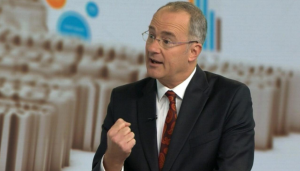Much is being made of how changes to the Residential Tenancies Act, which will be brought in under the RTA Amendment Bill No. 2, will create an obligation at law for Landlords and their property managers to use services provided by parties that are qualified and/or accredited in accordance with the recommendations under NZS8510:2017.
Assertions that in November 2018 these obligations exist at law are false and misleading.
The notes below identify the key elements of the Bill as they relate to contamination by meth and the approaches to be used when testing for meth. What they highlight, is that under the Bill, changes are coming. But, what is not yet known, is what those changes will be.
Summary of Facts
This Bill was introduced by National MP for Hunua Andrew Bayly and focused on methamphetamine. Part 2 of the Bill details the law as it applies to methamphetamine and other contaminants. The wording of the Bill has been widened to reference contaminants
Part 2 Section 25 defines what constitutes a contaminant and meets the definition of contaminated under the Bill. It notes that the definition of contaminated will be prescribed. However, The Bill does not identify what the prescribe level for contaminants such as meth will be.
When submissions on the Bill were being sought, it was reasonable to assume that the levels of meth residues identified in NZS8510:2017 (which were developed on the back of truly independent science undertaken by ESR, the peak body for Environmental Science in New Zealand), would have been prescribed.
Since then, there has been a change of Government and a shift of policy. So, what this means in terms of prescribed levels that will define what is “contaminated” is uncertain.
Part 2 Section 26 amend Landlord responsibilities under Section 45 of the RTA. It identifies that a landlord will not rent out a premise if it knows that a property that has been tested using “prescribed methods” and that levels exceed those which meet the definition of “contaminated”.
Again, the Bill does not identify what the “prescribed methods” are. Once again, when the Bill was first contemplated, it would be reasonable to assume that the sampling methodologies included in NZS8510:2017 would be adopted.
However, given the advice provided to Government by the Prime Minister’s Chief Science Advisor, such an assumption is premature.
identifies the process by which regulation around prescribe contaminants and methods for sampling will be made. These regulations are made by the Governor General on the recommendation of the Minister for Housing.
Sub-Section 1A notes that the Minister must have “regard to any relevant New Zealand Standard”. However, the Minister is not bound by that Standard. And of course a Standard can be changed. Given the Housing Minister’s dismissive attitude toward NZS8510:2017, it must be considered highly likely that this will change.
Looking ahead
The current approaches to screening for meth residues and quantifying the extent of meth contamination once its presence has been qualified, are recognised by overseas experts as being world leading. It is to be hoped that the work which resulted in the establishment of NZS8510:2017 will be built on and the Minister will have regard for NZS8510:2017. In this way, a framework of operation, which led to increased certainty on the part of end users, will be enhanced.
However, the highly politicised nature of meth contamination, means that this is by no means certain. Only time will tell how things will evolve.
Until then, the voluntary standard NZS8510:2017 and the framework it provides still constitutes best practice in this space. Organisations that have established track records, have evolved systems and processes, are insurance backed and which confirm their services are delivered in line with the Standard are the best way to reducing risks associated with poor performance.



